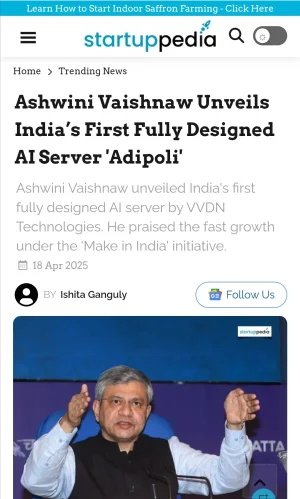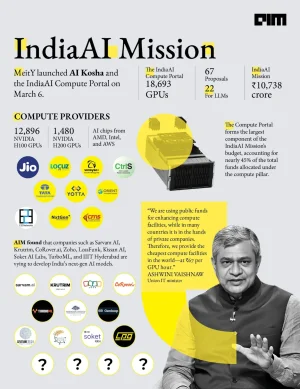- Joined
- Jul 1, 2024
- Messages
- 4,760
- Likes
- 24,978

IT Minister Ashwini Vaishnaw Challenges TCS, Infosys, Wipro to develop indigenous Mobile OS
“From this stage I would like to give this challenge to our big tech companies like Infosys, TCS and Wipro take up this challenge and develop the operating system for mobile,” Ashwini Vaishnaw said | OpIndia Newswww.opindia.com
Actually Zoho, Lenskart, quick heal if given funding and mandate, they would have higher probability to develop. Making those products popular totally depends on Govt policy.
Why? Product development is all about attitude. Dehaadi Thekedaars would not understand this.
View: https://youtu.be/FjMpg9k42Y4?si=eRHZlYr8ahJSeAqf
Ashwini Vaishnaw on AI , SMC IR & MeitY at The Republic Plenary Summit held yesterday.
View: https://youtu.be/vT0yO6GsIcU?si=jnY_xZCmYGhSxb5e
A few AI entrepreneurs on the AI scene in India. Seem gung ho at the opportunities & GoI's policies at The Republic Plenary Summit.Raghav & Abhinav Aggarwal, Ankush Sabharwal On India's AI Revolution | Republic Plenary Summit
If we've to move further in this field we'd have to look at young entrepreneurs . The older generation are either too old , have lost their risk taking appetite , are too conservative , have struck back room deals not to get into products with their principals in the US , are happy body shopping with ever decreasing scope & margins in an arbitrage business etc .
It's either some or most of the reasons cited above.














